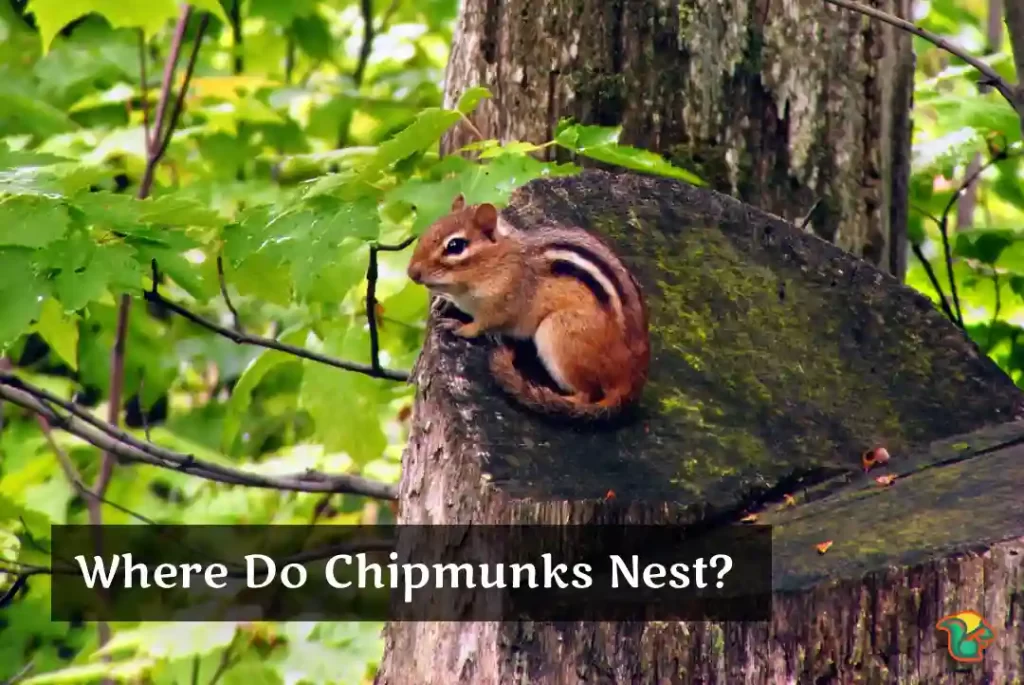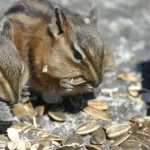Where Do Chipmunks Nest? [Chipmunk Facts]
Chipmunks are smart enough to build their nests when it comes to surviving and protecting themselves. But they aren’t any less than the engineers!
From the location they select for their shelter to the way they build their home, the way to keep their house hidden from the predators to how they use the house for colder seasons- they are pro builders.
Even these mammals think about the water drainage. Where do chipmunks nest and how they build their nest with such perfection- that’s all we are going to discuss today. From top to toe, let’s learn about the chipmunks’ nest!

Where Do Chipmunks Nest Know the Details
Chipmunks, the natives of North America, have 25 different species including the Siberian Chipmunks (only found in Siberia.) From Canada to Mexico, you will see them mostly in the urban and suburban areas. If you want to learn more about the geographic location for chipmunks, check out where do chipmunks live!
But where do they stay and sleep? Well, they can make nests in different locations. But almost all of them are the inhabitants of the underground. Like groundhogs and other such rodents, chipmunks also live under the ground.
They create underground burrows as their shelter. However, there are also chipmunks in the North that build their nests in the bushes or logs.
Burrows and the Levels
As almost all of the chipmunks live underground, we will talk about their underground nests here. These are not among those social animals that you can domesticate. They will count you as a predator and so, they will mostly avoid you or hide from you.
They are not even much social among their species. And this is why they prefer to live underground behind the eyes of everyone. If you see holes in your garden often, they might be made of chipmunks.
Such rodents dig holes on the ground and create burrows. These serve them as their nests. The tunnels they make underground are usually made up of two different levels.
· First Level of the Burrow
The first level of the burrow that these mammals make is connected to a tunnel that is close to the top part of the ground. They use this burrow to get into their nest. This part of the burrow is shallow and they design it for the warmer weather.
Especially, in the summer, when it’s hot, they love to be close to the ground to keep them cool. This part of the tunnel or burrow is the most used one between the two.
As we know, they feed themselves in the dusk and dawn- after they are done they come back to this shallow part. And during the day, these rodents sleep in this first level of their burrow.
· Second Level of the Burrow
On the other hand, there is a second level of the burrow that is added to the first tunnel. This one is a deeper burrow. They dig this one for the cold weather. In the winter, chipmunks hibernate.
And for their hibernation period, they have to settle for a burrow that’s warm enough to serve them safety in the cold. This deeper burrow provides them warmth in the winter. The first level or the shallow tunnel is less complicated but the deeper one is a bit complex.
So, how deep do chipmunks burrow for their winter shelter? Well, these burrows can be close to 30 feet long. This is the length but what about the depth of these holes? The depth of these tunnels can be more than 3 feet at times.
In the summer, they keep building the winter burrows to create a place for living when the upper layer is too cold to stay.
Location of the Burrows
You have already known about the levels of the burrows chipmunks make. But where do they create their burrows? These rodents love bushes and rocks along with the trees when it comes to selecting the locations for their tunnels.
These work as the natural covers for their burrows so that other animals or predators cannot find them seeing a hole on top of the ground. When it comes to picking up a place for creating a burrow, they also think about the water drainage factor.
This is why they choose sloppy ground. It helps to afford the necessary drainage of water. As they are very careful about their nests, they do anything and everything to keep their shelter hidden. This is why, right after they complete building their castle, they carry dirt away from the entrances.
As a result, the predators find it hard to know if there is a burrow or not! They do an excellent job of making the burrow challenging to find. For this reason, they try to line up the holes with leaves. Also, they add small rocks and sticks to cover up the holes.
Though they don’t have a long lifespan, they try to keep it cozy and safe! Also, you should know about how long do chipmunks live, check it out!
Chambers and Entrances of the Burrows
The burrows of the chipmunks have more than one chamber. Also, for their safety, they keep various entrances of the burrows. They build their nest in a way to sleep peacefully and yet to flee through the other entrances if they see any danger.
These entrances work as their escape routes if there is any threat. So, we got the reason for several entrances, but why do they make different chambers? How many chipmunks live in a burrow that they need so many chambers?
Well, as we have told you before, they aren’t social- they live alone in their nests. Check out how many chipmunks live together to know more about their social aspects! So, we get that they live alone. Then what are the other chambers for?
They are for storing the food. In the winter, they don’t get enough food. So, they use the additional chamber as storage. In those, they pile up food for the season. They hibernate in winters but occasionally, they wake up from hibernation to feed themselves.
Chipmunks are smart enough to think about their comfort zone too. And this is why they make their sleeping area cozy with the help of adding plant materials. They are all up for furnishing their long little nest!
Wrap Up
We, humans, require perfection when it comes to our homes. But animals like chipmunks and other rodents like them are also very careful about their nesting. They try every bit of their energy to make their house perfect for not only surviving but living! There are reasons why we call chipmunks smart, right?




